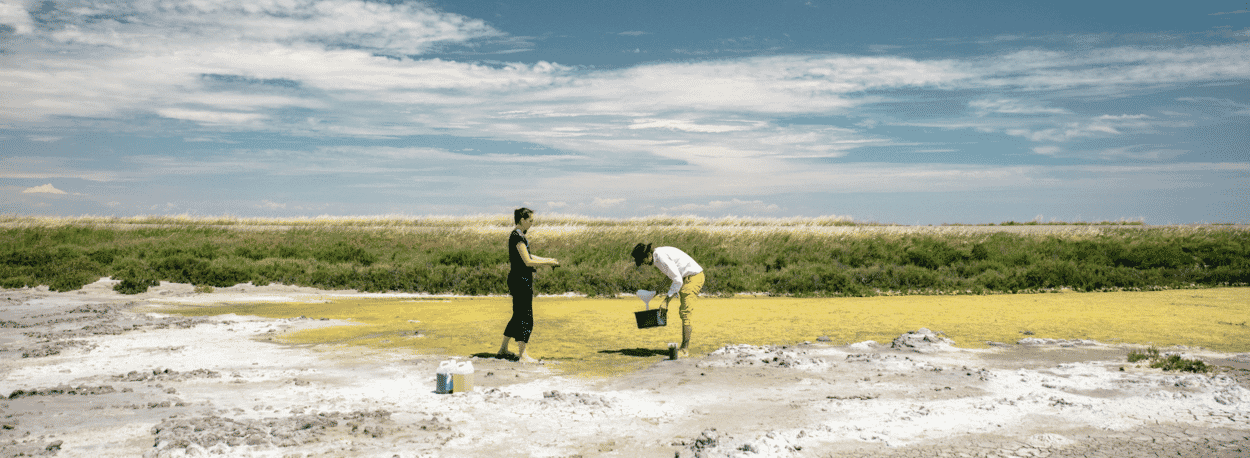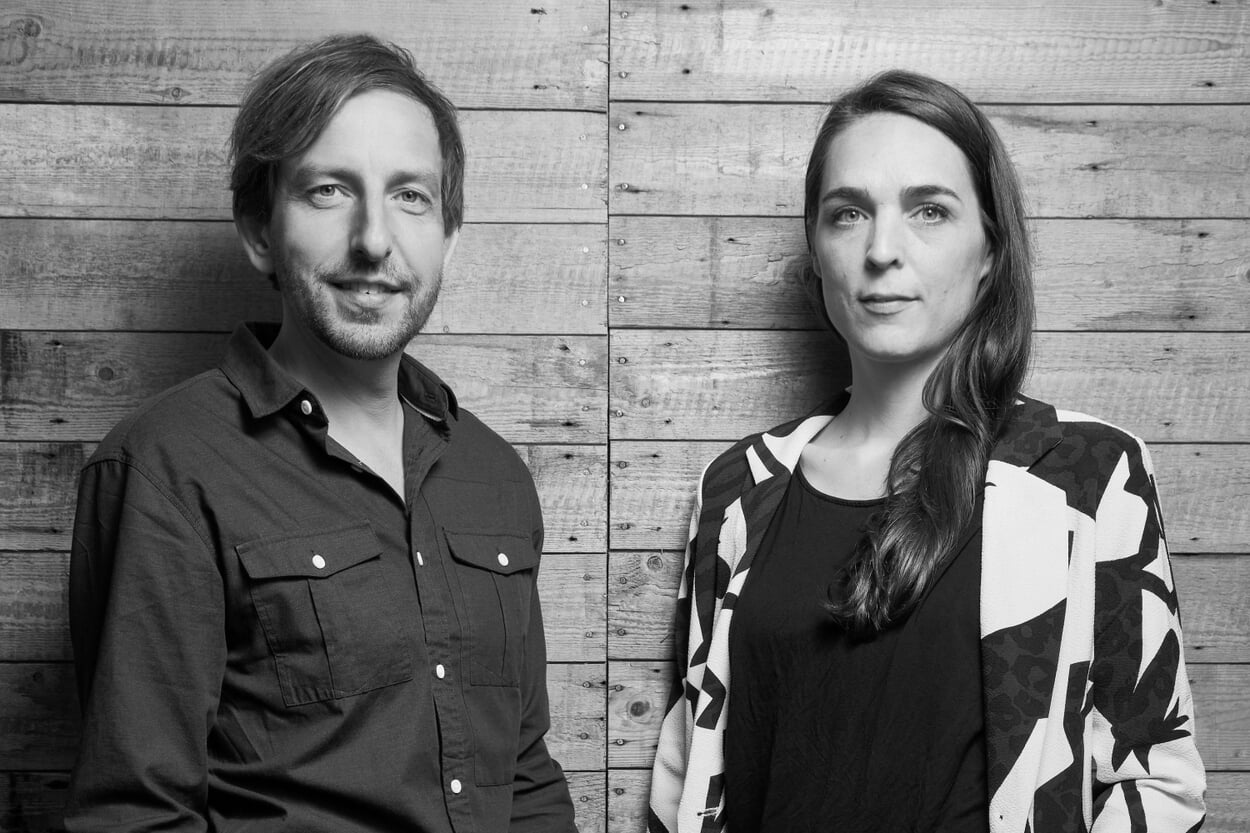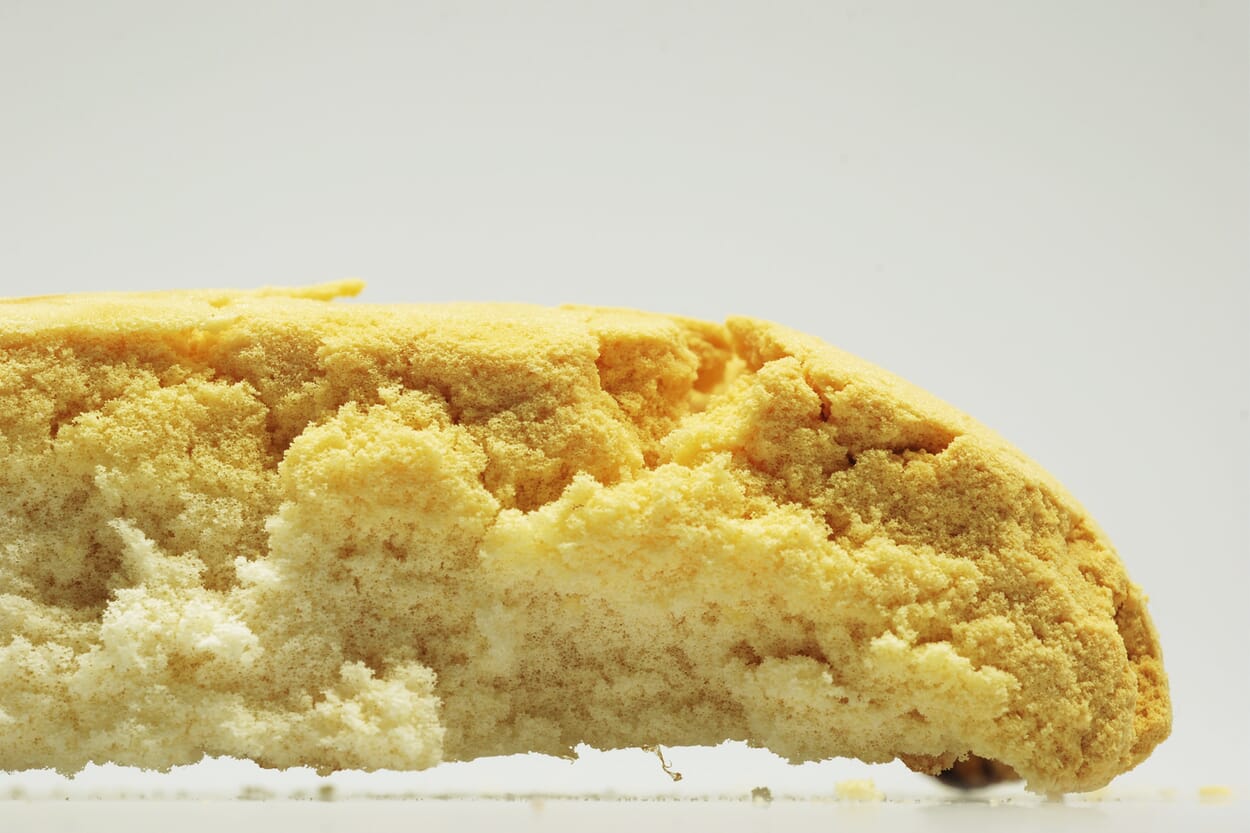Klarenbeek and Dros
Green plastic
Everyone should be aware by now of how destructive the unbridled production and use of petroleum-based plastic can be. That is why alternatives have long been researched. In their studio in a former paint factory near Amsterdam, the duo Klarenbeek & Dros are working with algae and fungi on the plastic of the future. Not only should it be compostable and protect the environment, its production should also bind CO2 - and even promote biodiversity.
Text: Florian Siebeck
Whether it's potato starch or cocoa bean shells, you're always on the lookout for new materials that could replace plastic. Where do you find them?
Many people don't know this, but biopolymers have a rich history. Henry Ford built a "Soy Bean Car" in 1941, the body of which was largely made of plant-based materials. And in the windmills of Zaandam, linseed was already being processed into oil in the 17th century, which Rembrandt and Vermeer mixed with pine resin to produce varnish. However, it was only durable for three to six months.
... and a far cry from what you produce: entire pieces of furniture made from algae, for example.
That's right. Because we need thermoplastics that we can print or injection mold. And that's where modern technology comes into play. It's basically like cooking: You try out different recipes, with starch, cocoa or sugar. In recent years, we have immersed ourselves in the world of algae and seaweed.
How does this work in practice?
We harvest the wet seaweed and take it to a farmer, where it goes into a kind of juicer. The fresh water that we take from the cells is used for the fields because it is full of nutrients such as nitrates and phosphates. This means that fertilizers and pesticides can be dispensed with. We process the dry mass into biopolymers in the form of filaments for 3D printing or a mass for injection molding.
Your goal is to build a global network of printers so that furniture and other products can be manufactured locally. They call it "the 3D bakery."
Exactly. Our idea is that in future there will be a store on every street corner where you can "bake" organic raw materials, almost like fresh bread. In emerging countries, for example, people could set up algae farms in the sea, fertilize their land, use the fresh water and produce socially and decentrally thanks to biopolymers.
Do you think you will live to see the large-scale introduction of biopolymers?
Yes. But we have to be realistic: conventional plastic will not disappear for the time being. We still drive oil-based cars, and as long as there is oil, there will be plastic, it is a waste product of the oil industry. Seaweed must also become a waste product in order to become competitive.
What do you say to critics who say: "These are orders of magnitude that can never be achieved?"
Of course it's difficult to scale up, but we have to start somewhere. And after all, it's not just about producing the material, but about building an infrastructure. We call this the "Seaweed Circle". A few seaweed growers in the Netherlands are already in the process of expanding production.
ERIC KLARENBEEK & MAARTJE DROS
Eric Klarenbeek and Maartje Dros studied at the Design Academy Eindhoven and have been working together since 2004. The duo creates networks of universities, high-tech companies, local farmers and cooperatives to explore the potential of natural raw materials such as algae, seaweed or mushroom mycelium as a substitute for petroleum-based plastics - using current technologies such as 3D printing.
Pictures: Antoine Raab; Victor Picon; Mark Cocksedge
More on the subject of plastic
Time for a thought experiment! What if plastics were a valuable resource - and not endlessly and cheaply available? This change of perspective could help us break free from our toxic relationship with plastic. The goal: to consume plastics more consciously - away from single-use, towards long-term use, away from packaging that is quickly disposed of, towards sensible, recyclable plastic products.
Mattresses crumble, computer cases turn yellow, coatings become sticky: plastics may be considered durable, but they age just like any other material. Tim Bechthold, restorer at Munich's Die Neue Sammlung design museum, explains how plastics degrade and which piece of furniture is his biggest problem child.






.png?profile=kuratorteaser_32)
.png?profile=kuratorteaser_1250)

